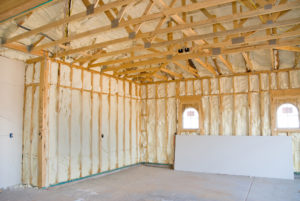If you’re planning on buying a new home, you’ll have to have a home inspector look at it first. This may seem unnecessary, but it protects you. Sometimes, a home may have problems that are easy for you to see. But in other situations, a house may have hidden problems that only a professional can find.

Below, you’ll find some of the key components of a home inspection.
1. Checking The Roof
Roofs usually do not need regular maintenance to stay in excellent condition if they have been installed correctly. Depending on the material of the roof, they also need to be replaced every 10 or 15 years. An inspector will examine the roof and determine whether or not it still needs work.
2. Examining The Foundation
In addition to looking for problems at the top of the home, an inspector will do a careful check underneath the home as well. They’ll look for any cracks or faults in the foundation. Foundation damage can cause significant problems down the road.
3. Checking For Mold
A home inspector should always test a home for mold. Mold isn’t always something you’ll notice when doing a walk through of a house, but it can cause a lot of major issues. A mold inspector should be able to check to see if there is mold behind the walls or beneath the flooring.
4. Looking For Electrical Issues
Faulty wiring can be a big problem. If left untreated, it could cause electrical issues to occur. Inspectors will make sure that there are no problems with the home’s outlets or wiring. Only hire a licensed electrician to do the repairs.
5. Looking For Leaks
Even if you don’t see any water when you walk through a home, a savvy inspector should be able to find evidence of leaks. A homeowner can mop up standing water before a walkthrough, but they can’t hide proof of a leak completely.
6. Examining The Furnace
Older homes often have older furnaces to go with them. These furnaces can wind up experiencing a lot of problems. The inspector will examine the furnace so that they can determine if it needs to be repaired or replaced.
7. Checking For Pest Problems
If a home has rats, termites, or some other kind of vermin, you’re probably not going to want to move your stuff into it. An inspector knows what the signs of vermin are. If they suspect that the home has some pest problems, they’ll pass along the information that they have to do.
8. Providing You With A Written Report
After an inspector completes a visual inspection of the home, they’ll provide you with a detailed report. While they should talk over any major issues with you, reading through the report can give you a better idea of the home you’re buying.
You shouldn’t be too nervous about a home inspection. If something is wrong, the inspector will be able to keep you from making a big mistake. On the other hand, with a positive report, you’ll be able to move into it without worrying. You’ll know that the inspector already checked the house from top to bottom. Read more about our services here.